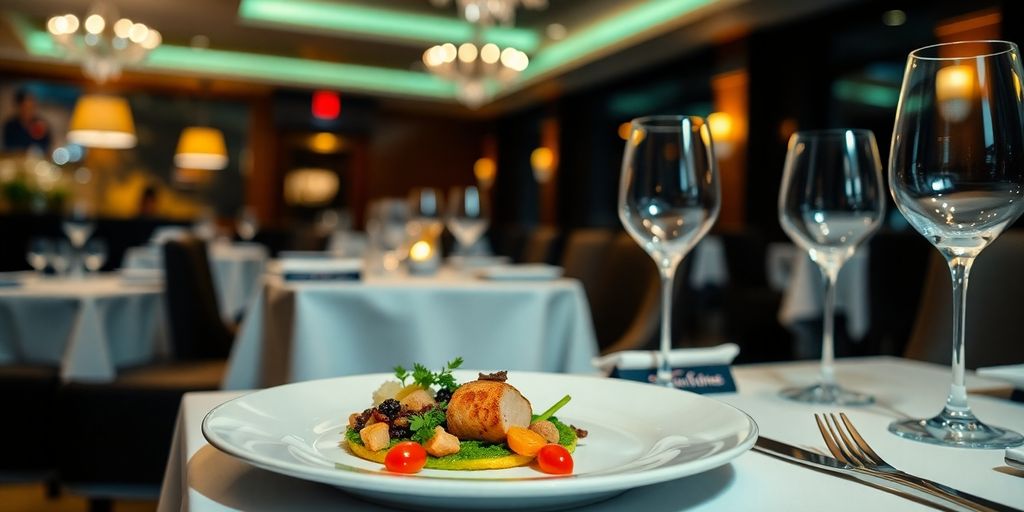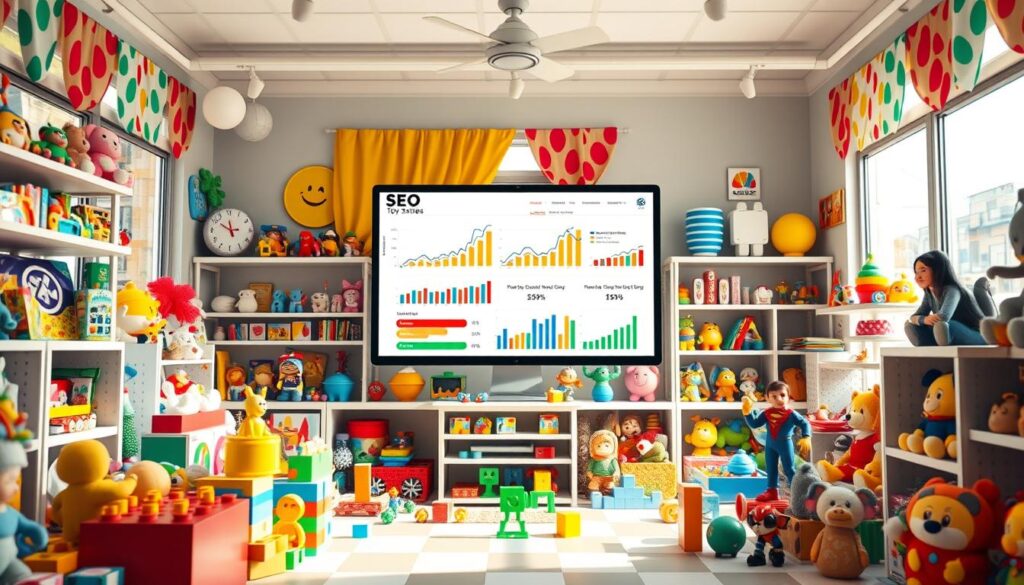Ever wondered how fine dining spots get discovered online? It’s not just about having a fancy website or a catchy name. It’s about SEO, or search engine optimization. This magic tool helps restaurants climb the search results ladder, making them more visible to potential diners. With so many places to eat, standing out is key. And that’s where SEO comes in. It’s not just for tech geeks; it’s for anyone who wants their restaurant to be the first thing people see when they’re hungry and searching.
Key Takeaways
- SEO boosts your restaurant’s visibility in search results, attracting more diners.
- Local SEO is crucial for fine dining, helping you connect with nearby customers.
- Quality content, like blogs and menu showcases, can improve your SEO performance.
- Technical SEO ensures your site is fast and mobile-friendly, enhancing user experience.
- Regularly updating your content and avoiding common mistakes can keep your SEO on track.
Understanding Search Engine Optimization for Restaurants
Defining SEO in the Restaurant Context
Search Engine Optimization, or SEO, is all about making your restaurant more visible online. Imagine someone searching for a "fine dining restaurant near me"—SEO helps ensure your restaurant pops up on that list. It’s not just about having a website; it’s about making sure your website is found by the right people. SEO is like the digital handshake that introduces your restaurant to potential diners.
The Importance of Visibility in Search Results
When someone is hungry and searching for a place to eat, they often don’t look past the first page of search results. This means if your restaurant isn’t showing up there, you might be missing out on new customers. Think of SEO as your digital maître d’, guiding diners straight to your door. By optimizing your online presence, you increase the chances of attracting more guests.
How SEO Impacts Customer Acquisition
SEO isn’t just about getting clicks; it’s about getting the right clicks. When your restaurant appears in search results, it’s more likely to be seen by people who are actively looking to dine out. This means more foot traffic and, ultimately, more revenue. SEO helps you reach those who are ready to make a reservation or visit your restaurant, turning online searches into real-world visits.
Key Components of Effective Restaurant SEO
Optimizing Website Content for Search Engines
To make your restaurant stand out in the vast digital landscape, it’s essential to focus on optimizing your website content for search engines. This means ensuring that your content is relevant, engaging, and aligned with what potential customers are searching for. Start by updating your menu, location details, and business hours regularly. Including alt text for images, especially those showcasing your dishes, can make a big difference. This helps search engines understand what your images are about, boosting your site’s visibility.
The Role of Keywords in Restaurant SEO
Keywords are the backbone of any successful SEO strategy. Identifying and using the right keywords can significantly enhance your online presence. Conduct keyword research to find terms that potential diners might use when searching for restaurants like yours. Tools like Google Keyword Planner can be handy for this. Once you’ve identified your keywords, incorporate them naturally into your website content, including headings, descriptions, and even image captions. This not only helps search engines understand your offerings but also connects you with diners looking for specific experiences.
Building a User-Friendly Website Structure
A well-structured website is crucial for effective SEO. Think of it as setting up a clean, welcoming dining area in your restaurant. Your site should be easy to navigate, with clear categories and a logical flow. Use descriptive URLs and ensure that your site is mobile-friendly, as many potential customers will be browsing on their phones. Fast load times are also important; a slow site can turn away customers before they’ve even had a chance to see your menu. Regularly check for broken links and outdated pages to maintain a smooth user experience.
A strong SEO strategy not only drives more visitors to your site but also enhances their overall experience, making them more likely to choose your restaurant over competitors. Remember, as more people turn to online searches for dining options, neglecting SEO can lead to missed opportunities and reduced competitiveness. Effective SEO strategies are essential for established restaurants to enhance online visibility, attract new customers, and build credibility.
Local SEO Strategies for Fine Dining Establishments

Claiming and Optimizing Your Google Business Profile
The first step in enhancing your local SEO is to claim and optimize your Google Business Profile. This is crucial because it ensures your restaurant is visible on Google Maps and search results when potential diners are looking for nearby dining options. Make sure that all your information, such as address, phone number, and opening hours, is accurate and up-to-date. Upload high-quality photos that showcase your restaurant’s ambiance and dishes. Encourage customers to leave reviews, as these can significantly impact your visibility and attractiveness to new diners.
Utilizing Local Keywords for Better Reach
Incorporating local keywords is a powerful way to improve your restaurant’s searchability. Think about what potential customers might type into Google when searching for a place to eat. Phrases like "fine dining near me" or "best steakhouse in [your city]" are examples of local keywords you should sprinkle throughout your website and online directories. It’s not just about using these words but placing them strategically in your content, such as in headings, meta descriptions, and image alt texts.
Encouraging Customer Reviews and Engagement
Customer reviews are more than just feedback; they’re a vital component of local SEO. Encourage your diners to leave positive reviews on platforms like Google, Yelp, and TripAdvisor. Respond to these reviews, both positive and negative, to show that you value customer feedback and are committed to improving their experience. This engagement not only boosts your SEO but also builds trust with potential customers.
Local SEO isn’t just about being found; it’s about being the first choice. By optimizing your online presence with local keywords, engaging with customer reviews, and maintaining an active Google Business Profile, your fine dining restaurant can stand out in a crowded market. Make sure your online presence reflects the quality and uniqueness of your dining experience.
Content Marketing and SEO for Fine Dining
Creating Engaging Blog Content
Crafting engaging blog content is like setting the table for a memorable dining experience. When writing for a fine dining audience, you want to focus on stories that resonate with them. This might include behind-the-scenes looks at your kitchen, chef interviews, or the history of your signature dishes. Blog posts should captivate readers while also incorporating relevant keywords that help boost your restaurant’s visibility online. Consider writing about seasonal ingredients or wine pairings, which can naturally incorporate terms that potential diners might search for.
Showcasing Menu Items with SEO in Mind
Your menu is more than just a list of dishes—it’s a powerful tool for SEO. When you describe your dishes, think about how someone might search for them online. Use descriptive language that highlights unique ingredients or cooking techniques. For example, instead of just listing "pasta," you might say "handmade tagliatelle with truffle cream sauce." This not only entices diners but also improves your search engine rankings by including specific terms. Make sure each dish has its own page on your website, allowing search engines to index them individually.
Leveraging Social Media for SEO Benefits
Social media isn’t just for posting pretty pictures; it’s a key player in your SEO strategy. By regularly updating platforms like Instagram and Facebook, you can increase your restaurant’s visibility and drive traffic to your website. Encourage diners to share their experiences and tag your restaurant, creating user-generated content that enhances your online presence.
In the competitive world of fine dining, a strong social media presence can set your restaurant apart, making it more discoverable to potential customers.
To maximize your efforts, ensure your social media profiles are complete with your location, hours, and a link to your website. This not only helps with local searches but also builds a consistent brand image across platforms. By integrating these strategies, you can effectively use content marketing to enhance your restaurant’s SEO, making it easier for diners to find and choose your establishment.
For more on how SEO for restaurants enhances online visibility, consider exploring how targeted keywords and optimized content can make your fine dining experience more appealing to potential customers.
Technical SEO Considerations for Restaurant Websites

Ensuring Mobile-Friendliness and Fast Load Times
In today’s fast-paced world, nobody wants to wait for a website to load. Speed is crucial. If your restaurant’s site is slow, potential customers might just leave before it even finishes loading. Make sure your site is optimized for speed by compressing images, using browser caching, and minimizing code. Also, with so many people browsing on phones, having a mobile-friendly site isn’t optional—it’s a must. Use responsive design to ensure your site looks great on any device.
Implementing Structured Data for Better Indexing
Structured data helps search engines understand your site’s content better. By using structured data, you can highlight important information like your menu, location, and opening hours. This makes it easier for search engines to display your info in search results. Implementing structured data can lead to rich snippets, which can make your site stand out in search results.
Addressing Common Technical SEO Issues
There are several technical issues that can hurt your SEO efforts if not addressed.
- Broken Links: These can frustrate users and make search engines think your site isn’t well-maintained.
- Duplicate Content: This can confuse search engines and cause your pages to compete against each other.
- Missing Alt Text: Images without alt text can be missed by search engines, impacting your site’s accessibility.
Keeping your restaurant’s website technically sound is like maintaining a clean kitchen—it’s essential for a smooth operation and happy customers.
Prioritizing technical SEO is crucial for restaurants, focusing on optimizing website speed for quick loading times and enhancing crawlability to improve search engine visibility.
Measuring SEO Success for Your Restaurant
Key Metrics to Track for SEO Performance
When you’re trying to figure out if your SEO strategies are working, there are a few key metrics you should keep an eye on. Organic traffic is one of the most important. This is the number of visitors coming to your site from search engines, not paid ads. Watch this number closely; it’s a good indicator of how well your SEO efforts are paying off.
Another metric to consider is bounce rate. This tells you how many visitors leave your site after viewing just one page. A high bounce rate might mean your content isn’t engaging or relevant to what users were searching for.
Also, keep an eye on keyword rankings. If you see your restaurant climbing higher in search results for targeted keywords, it’s a sign your SEO game is strong.
Using Analytics Tools to Monitor Traffic
To really get into the nitty-gritty of your website’s performance, you’ll need some analytics tools. Google Analytics is a great start; it provides detailed insights into who’s visiting your site, how they got there, and what they’re doing once they arrive.
Look for trends over time rather than getting hung up on daily fluctuations. Are more people finding your site through search engines? Are they spending more time exploring your menu or booking a table online?
Don’t forget about Google Search Console. It’s another free tool that gives you a peek into how Google views your website. Use it to check for crawl errors and to see which search queries bring users to your site.
Adjusting Strategies Based on Performance Data
Once you have all this data, what do you do with it? Start by identifying what’s working and what’s not. If a particular keyword isn’t driving traffic, it might be time to switch it up.
Consider running A/B tests on different elements of your site, like headlines or call-to-action buttons, to see what resonates best with your audience.
Remember, SEO isn’t a one-and-done deal. It’s an ongoing process. Use your data to refine and tweak your approach regularly.
"SEO success isn’t just about having a good strategy; it’s about being flexible and responsive to the data you gather."
By focusing on these metrics and using the right tools, you can ensure your SEO efforts are truly helping your restaurant stand out online. And as you refine your strategies, you’ll likely see an increase in website traffic and customer trust, which can lead to more reservations and orders.
Common SEO Mistakes to Avoid in the Restaurant Industry
Neglecting Mobile Optimization
Many restaurant owners overlook the importance of mobile optimization. In today’s world, more people use their smartphones to search for dining options than ever before. If your website isn’t mobile-friendly, you’re likely missing out on a significant chunk of potential customers. A site that’s not optimized for mobile can lead to a frustrating user experience, causing visitors to leave quickly and possibly never return. Make sure your site is responsive and loads quickly on mobile devices to keep visitors engaged.
Ignoring Local SEO Best Practices
Local SEO is crucial for restaurants, yet many neglect it. Without focusing on local SEO, your restaurant might not appear in local search results, which can significantly impact your visibility. Ensure that you claim and optimize your Google Business Profile, use local keywords, and encourage customer reviews. These steps help improve your local search rankings and attract nearby diners.
Failing to Update Content Regularly
Stale content can hurt your SEO efforts. Search engines favor websites that are updated regularly with fresh content. If your menu changes seasonally or you host events, make sure these updates are reflected on your website. Regularly updating your site not only helps with SEO but also keeps your customers informed and engaged.
Keeping your website updated and optimized isn’t just about pleasing search engines; it’s about creating a better experience for your customers. A well-maintained site reflects positively on your restaurant’s brand, inviting more diners to explore what you have to offer.
Linking to an Online Ordering System on a Different Domain
A common mistake is having an "order online" button that redirects to a different domain. This can confuse customers and disrupt the seamless experience they expect. It’s best to integrate your online ordering system directly into your website to keep customers on your page and improve your search engine rankings.
Lack of Responsive Design
Responsive design is essential for a good user experience. Websites that don’t adapt to various screen sizes can frustrate users and lead to higher bounce rates. Make sure your website design is consistent and follows established norms to enhance brand perception. For more on this, check out common web design mistakes for restaurants.
Wrapping It Up: SEO for Fine Dining
So, there you have it. SEO might sound like a techy buzzword, but for fine dining restaurants, it’s more like a secret ingredient. Sure, it’s not as flashy as a new dish on the menu, but it’s just as important. When folks are searching for a place to eat, you want your restaurant to pop up first. It’s like having the best spot on the busiest street. With a bit of effort, like keeping your website updated and using the right keywords, you can make sure your restaurant stands out online. And who knows? That could mean more diners walking through your doors. So, give it a shot. It’s worth it.
Frequently Asked Questions
What is SEO and why is it important for restaurants?
SEO, or Search Engine Optimization, is a way to make your restaurant’s website show up more when people search online. It’s important because it helps bring more visitors to your site, which can turn into more customers.
How can SEO help my restaurant get more customers?
By using SEO, your restaurant can appear higher in search results. This means more people will see your restaurant when they search for places to eat, leading to more visitors and potential customers.
What are some easy ways to improve my restaurant’s SEO?
Some simple ways to boost your restaurant’s SEO include using the right keywords related to your food and location, making sure your website is easy to use, and keeping your content fresh and updated.
Why is local SEO important for my fine dining restaurant?
Local SEO helps your restaurant appear in searches made by people nearby. This is important for fine dining restaurants because it attracts local diners who are looking for a place to eat.
How does having a mobile-friendly website affect my SEO?
A mobile-friendly website is important because many people search for restaurants on their phones. If your site works well on mobile devices, it can improve your SEO and help more people find your restaurant.
What are some common SEO mistakes restaurants make?
Common mistakes include not updating your website regularly, ignoring local SEO practices, and not making your site mobile-friendly. Avoiding these can help improve your restaurant’s online presence.






